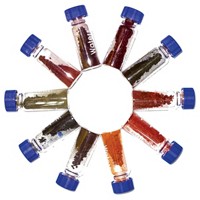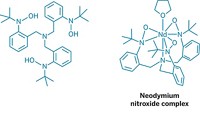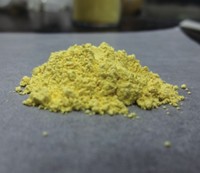Advertisement
Grab your lab coat. Let's get started
Welcome!
Welcome!
Create an account below to get 6 C&EN articles per month, receive newsletters and more - all free.
It seems this is your first time logging in online. Please enter the following information to continue.
As an ACS member you automatically get access to this site. All we need is few more details to create your reading experience.
Not you? Sign in with a different account.
Not you? Sign in with a different account.
ERROR 1
ERROR 1
ERROR 2
ERROR 2
ERROR 2
ERROR 2
ERROR 2
Password and Confirm password must match.
If you have an ACS member number, please enter it here so we can link this account to your membership. (optional)
ERROR 2
ACS values your privacy. By submitting your information, you are gaining access to C&EN and subscribing to our weekly newsletter. We use the information you provide to make your reading experience better, and we will never sell your data to third party members.
Synthesis
A New Twist on Aqua Regia
ACS Meeting News: Powerful organic-based systems dissolve noble metals under mild conditions
by Stephen K. Ritter
March 31, 2011
| A version of this story appeared in
Volume 89, Issue 14

By coupling common organic reagents with the inorganic reagent thionyl chloride (SOCl2), a team of Georgia Tech materials chemists has created an organic version of aqua regia, the centuries-old 1:3 mixture of concentrated nitric and hydrochloric acids that is one of the few substances known to dissolve noble metals such as gold.
But more than that, by changing the organic reagent and reaction conditions, the organic aqua regia selectively dissolves different noble metals at high rates at room temperature and pressure. These capabilities improve on nonselective systems such as aqua regia and systems with low dissolution rates such as cyanide-based solutions to make organic aqua regia a more powerful chemical tool for etching metals in electronics fabrication steps and for recovering noble metals from catalytic converters, recycled electronics, and industrial catalysts.
"These new formulations aren't the first etchants for noble metals containing organic molecules," said Georgia Tech's Wei Lin, who spoke about organic aqua regia during a Division of Inorganic Chemistry symposium at the American Chemical Society national meeting in Anaheim. "There is previous work using organic molecules as additives in etchants. But the unique feature of organic aqua regia is that it is highly selective and the mechanism appears to be different from previous recipes."
Working in Ching-Ping Wong's group at Georgia Tech, Lin and coworkers have found that a 1:20 SOCl2-dimethylformamide mixture dissolves gold quickly, but it leaves palladium and platinum untouched; a 3:1 SOCl2-pyridine mixture dissolves gold and palladium rapidly, but it leaves platinum alone (Angew. Chem. Int. Ed., DOI: 10.1002/anie.201001244). Altogether, the team has devised some 120 such formulations.
Lin proposes that the organic reagent activates SOCl2 to directly oxidize the metal, converting gold metal into soluble gold(III) species, for example. This mechanism is tunable for different metals by using different organic reagents and conditions, Lin said. Aqua regia and other systems work by conventional redox reaction mechanisms, he notes.
Maria Laura Mercuri of Italy's University of Cagliari is a bit skeptical of organic aqua regia. She is a cofounder of 3R Metals, a company developing low-polluting methods for recovering noble metals from high-tech waste, including a system of iodine coupled with azepinedithiones.
Mercuri believes the proposed reaction mechanism still needs to be clarified. And the selectivity aside, although organic aqua regia might be better than using boiling aqua regia, it doesn't appear to be recyclable and SOCl2 and the organic reagents used can be dangerous to handle and harmful to the environment, Mercuri said. "The described reagents still seem very far from application as a green chemistry technology," she said.
Lin points out that when it comes to real applications, acetonitrile can be used as the solvent with smaller amounts of SOCl2 and organic reagent, a system that could be recycled.
Timo Repo of Finland's University of Helsinki is more upbeat. Repo's group has used pyridinethiols in alcohol to dissolve gold. "Lin's system provides an opportunity for a wide range of applications on different scales," Repo said. "Selective dissolution of noble metals is highly desirable for microelectronic applications, but it will certainly find use in construction of nanostructured materials, too. On the other hand, large-scale applications such as purification and recycling of noble metals are also attainable if issues related to recycling of the etchants are resolved."





Join the conversation
Contact the reporter
Submit a Letter to the Editor for publication
Engage with us on Twitter